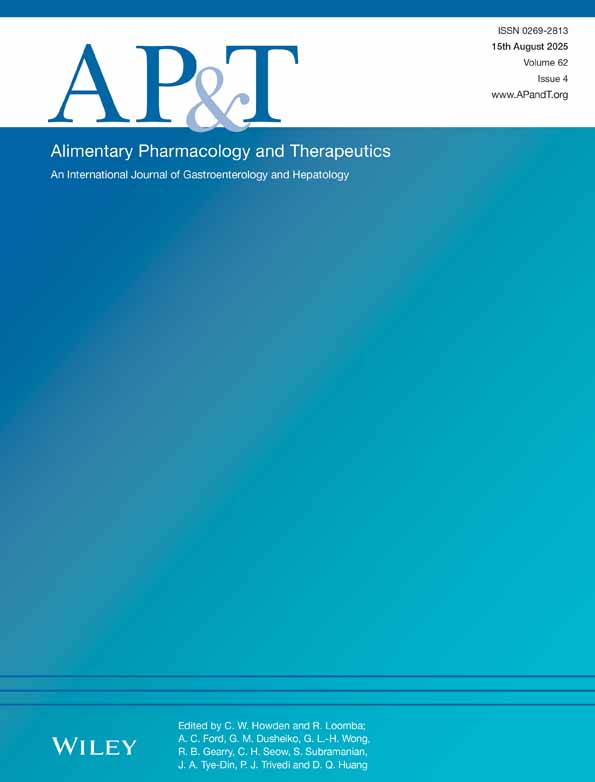Alosetron relieves pain and improves bowel function compared with mebeverine in female nonconstipated irritable bowel syndrome patients
Abstract
Background
: Irritable bowel syndrome is one of the most common gastrointestinal disorders, yet no therapy convincingly controls the multiple symptoms of this syndrome.
Aim
: To compare the efficacy and tolerability of the new 5-HT3-receptor antagonist alosetron and the smooth muscle relaxant mebeverine in a double-blind, multicentre, randomized trial.
Methods
: Six hundred and twenty-three nonconstipated females with irritable bowel syndrome were randomized to receive alosetron 1 mg twice daily (n=319) or mebeverine 135 mg three times daily (n=304) for 12 weeks, followed by a 4-week post-treatment period. The primary efficacy end-point was monthly responders for adequate relief of irritable bowel syndrome related abdominal pain and discomfort (defined as patients reporting adequate relief on at least 2 out of 4 weeks). Secondary end-points included assessments of bowel function, including urgency, stool frequency and stool consistency.
Results
: There were significantly more responders in the alosetron group compared with mebeverine at months 2 and 3 (P < 0.01). Compared with mebeverine, the alosetron group experienced significant decreases in proportion of days with urgency and mean stool frequency, and had firmer stools within 1 week of starting treatment. A similar proportion of patients reported adverse events in the two treatment groups.
Conclusions
: In nonconstipated female irritable bowel syndrome patients, alosetron is significantly more effective than mebeverine in improving symptoms.




